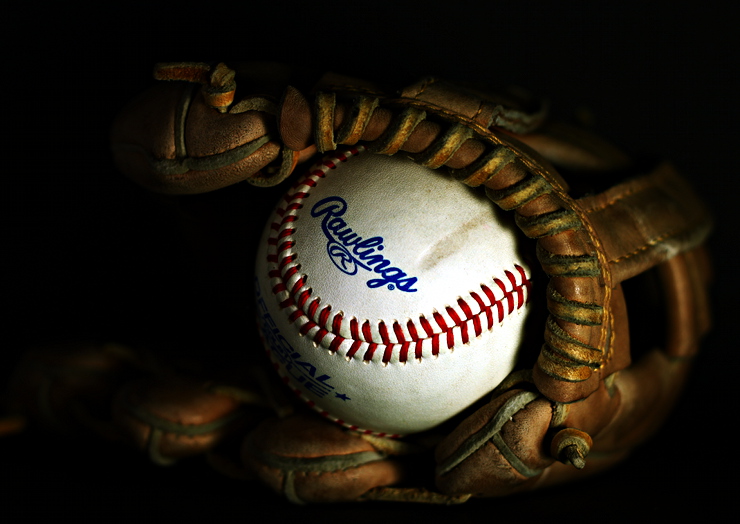"It's Complicated": Minor League Baseball's Antitrust Exemption After Save America's Pastime Act
By: Catherine DeSilvester*
A Day in the Life
The minor league farm system for Major League Baseball (“MLB”) is composed of various levels of teams, which serve as building blocks for their parent organizations.[1] Players, both drafted and undrafted, are required to navigate their way through the Minor League Baseball system (“MiLB”).[2] A very small number of players in history have skipped the entirety of the minor leagues; the vast majority of recruits will spend their days working towards the ultimate goal: making the forty-man roster.[3] Like most goals, this feat requires a lot of work, but in this context, it also requires players to make less than minimum wage.[4] A multitude of litigation has ensued advocating for minor league players to receive the federally regulated minimum wage, but due to baseball’s historic encounters with antitrust law, none of these suits have resulted in any relief.[5]
Baseball’s Rocky History with Antitrust Law
In 1922, a court decided baseball was a game, not subject to trade or commerce laws, and thus, exempt from the antitrust laws.[6] Antitrust laws prevent restrained trade in interstate commerce. The 1922 decision thus allows the baseball organizations great leniency and freedom in controlling their organization, trading and salaries of players, and the league itself.[7] The product of this decision created a binding effect on those cases that came after it, all citing the initial precedent of the case.[8] In subsequent opinions, one factor remained unanimous: baseball was competition, not commerce.[9]
In 1998, the Senate passed the Curt Flood Act to explicitly categorize MLB employment matters under the jurisdiction of antitrust law.[10] In announcing the law, President Clinton stated, “This legislation is the successful culmination of bipartisan efforts to treat employment matters with respect to Major League Baseball players under the antitrust laws in the same way such matters are treated for athletes in other professional sports.”[11] The Curt Flood Act narrowly limited baseball’s antitrust exemption to afford MLB players certain protections under antitrust law, but left the remainder of the exemption intact.[12]
In 2018, a portion of President Trump’s spending bill exempted minor league baseball players from the protections of the Fair Labor Standards Act (“FLSA”) which resulted in giving players less protections than their MLB counterparts.[13] The portion of the bill entitled “Save America’s Pastime Act” (the “Act”) allows each affiliated minor league team to pay their players less than the minimum wage.[14] The Act provides that players are not entitled to compensation past the forty-hour work week, even with the demanding nature of their schedules, which means the actual pay for the time the players are working is, frankly, abysmal.[15] The result of the Act is payment of the federal minimum wage for the duration of the team’s respective season.[16] However, this has not calmed the concerns of many critics that the Act will worsen matters for MiLB players.[17]
The Result
The current status of minor league players is seen by many as a rite of passage.[18] The promised land remains with the MLB teams, and the minors are the main way to climb the ladder.[19] Currently, players in the MiLB are the lowest paid amongst all minor league sports.[20] This disparity leaves many to wonder why the MLB does not value its up-and-coming players as much as other leagues.[21] The MiLB needs to call upon Congress to rectify MiLB’s status as an exemption to antitrust.[22] America’s pastime represents the hopes and dreams of the country, but sadly, at times its players are exempt from this dream.[23]
*Staff Writer, Jeffrey S. Moorad Sports Law Journal, J.D. Candidate, May 2020, Villanova University Charles Widger School of Law
[1] See Doug Bernier, What Is Minor League Baseball, Pro Baseball Insiderhttp://probaseballinsider.com/what-is-minor-league-baseball/ (last visited Apr. 22, 2019) (explaining minor league levels as rookie, Class A Short, Class A, Class A Advanced, AA, and AAA).
[2] See id.(providing that each organization has teams from AAA (“triple A”) to rookie leagues and players advance at different rates).
[3] See id.(noting that most players require 2–15 years of experience in minor leagues before moving up to 40-man roster, if they ever move up).
[4] See Maury Brown, Minimum Wage Exemption Is the Culmination of a Battle Over MLB and Minor League Economics, Forbes (Mar. 26, 2018) https://www.forbes.com/sites/maurybrown/2018/03/26/the-fragile-economics-between-mlb-the-minors-and-the-minimum-wage-exemption/#4759e9f53c21 (providing that minor league players make an average of $7,500 per year and are only paid for 5-month duration of season).
[5] See Kevin Reichard, MiLB Player Wages Class Action Suit is Back, Ball Park Digest (Mar. 9, 2017) https://ballparkdigest.com/2017/03/09/milb-player-wages-class-action-suit-is-back/ (explaining most recent failed class action attempting to gain year round minimum wage for minor league players).
[6] See Fed. Baseball Club of Balt. v. Nat’l League of Prof. Baseball Clubs, 259 U.S. 200, 207 (1922) (characterizing baseball as competition rather than commerce).
[7] See id. at 208–09 (“But the fact that in order to give the exhibitions the Leagues must induce free persons to cross state lines and must arrange and pay for their doing so is not enough to change the character of the business.”).
[8] See Toolson v. N.Y. Yankees, Inc., 346 U.S. 356, 364 (1953) (explaining how Congress’s inaction is interpreted by court as action); see also Flood v. Kuhn, 407 U.S. 258, 261–64 (1972) (illustrating poetic opinion about baseball stating commerce clause precluded application of state antitrust laws to baseball).
[9] See Fed. Baseball Club of Balt., 295 U.S. at 207 (illustrating how people view baseball as sport and not state action).
[10] See 15 U.S.C. §26(b) (1998) (codifying Curt Flood Act).
[11] President William J. Clinton, Address at the White House (Oct. 27, 1998).
[12] See id. (“The Act appropriately limits baseball’s special judicially created antitrust exemption by expressly applying the antitrust laws to certain conduct of Major League Baseball; the applicability of the antitrust laws with respect to all other conduct is unchanged.”)
[13] See Save America’s Pastime Act, Pub. L. No. 115-141, § 201, 132 Stat. 348 (codified as amended at Fair Labor Standards Act 29 U.S.C. 213(a) (2018)); see also Maury Brown, Minimum Wage Exemption is the Culmination of a Battle Over MLB and Minor League Economics, Forbes (Mar. 26, 2018) https://www.forbes.com/sites/maurybrown/2018/03/26/the-fragile-economics-between-mlb-the-minors-and-the-minimum-wage-exemption/#4759e9f53c21 (stating that exemption essentially places players below federal poverty line with making roughly $8,000 per year).
[14] See Michael Baumann, The Disgrace of Minor League Baseball, The Ringer(Apr. 20, 2018) https://www.theringer.com/mlb/2018/4/20/17259846/minor-league-baseball-anti-labor-ronald-acuna-scott-kingery (commenting that deal is “as disingenuous as it is sanctimonious” because players are still not paid for off-season time).
[15] See Whitney McIntosh, How Congress Screwed over Minor League Baseball Players, Explained, SBNation (Mar 23, 2018), https://www.sbnation.com/mlb/2018/3/23/17152778/spending-bill-minor-league-baseball-explained-save-americas-pastime (quoting Act text providing pay at “a rate that is not less than a weekly salary equal to the minimum wage under section 6(a) for a workweek of 40 hours, irrespective of the number of hours the employee devotes to baseball related activities” to show immense harm to players).
[16] See Bauman, supra note 14 (noting players received $1,160 per month during season, which is synonymous with getting $7.25 an hour for 40-hour workweek).
[17] See id. (explaining players often work 40-50 hours per week during season and also are not able to gain compensation for off-season/spring season training); see also Ronald Blum, Minor League Baseball Players to Lose Minimum Wage Protection, Boston.com (March 23, 2018) https://www.boston.com/sports/mlb/2018/03/23/minor-league-baseball-minimum-wage-protection (contrasting how MLB is unionized with minimum salary limit, but minor leagues are not).
[18] See Bernier, supra note 1 (explaining how both drafted and undrafted players must participate in minor league).
[19] See Kevin Reichard, MiLB Player Wages Class Action Suit is Back, Ball Park Digest(Mar. 9, 2017) https://ballparkdigest.com/2017/03/09/milb-player-wages-class-action-suit-is-back/ (stating payers do not regret decision to play in minor leagues because it was a part of their dream to make MLB).
[20] See Baumann, supra note 14 (distinguishing between hockey and basketball minor league systems).
[21] See Maury Brown, Minimum Wage Exemption is the Culmination of a Battle Over MLB and Minor League Economics, Forbes (Mar. 26, 2018) https://www.forbes.com/sites/maurybrown/2018/03/26/the-fragile-economics-between-mlb-the-minors-and-the-minimum-wage-exemption/#4759e9f53c21(citing MLB’s 1.3-million-dollar lobbying effort for Act’s legislation and minimum player salary in MLB as $500,000 plus benefits).
[22] See Tom Goldman, Fight Against Low, Low Pay in Minor League Baseball Continues Despite New Obstacles, Nat’l Pub. Radio (Aug. 3, 2018) https://www.npr.org/2018/08/03/635373608/fight-against-low-low-pay-in-minor-league-baseball-continues-despite-new-obstacl (detailing specific website set up by former players to detail experiences and hardships of MiLB experience).
[23] See Goldman, supra note 18 (highlighting Jonathon Perrin’s desire as a minor league player for fair opportunity to develop his skills and have legitimate shot at making MLB team).


